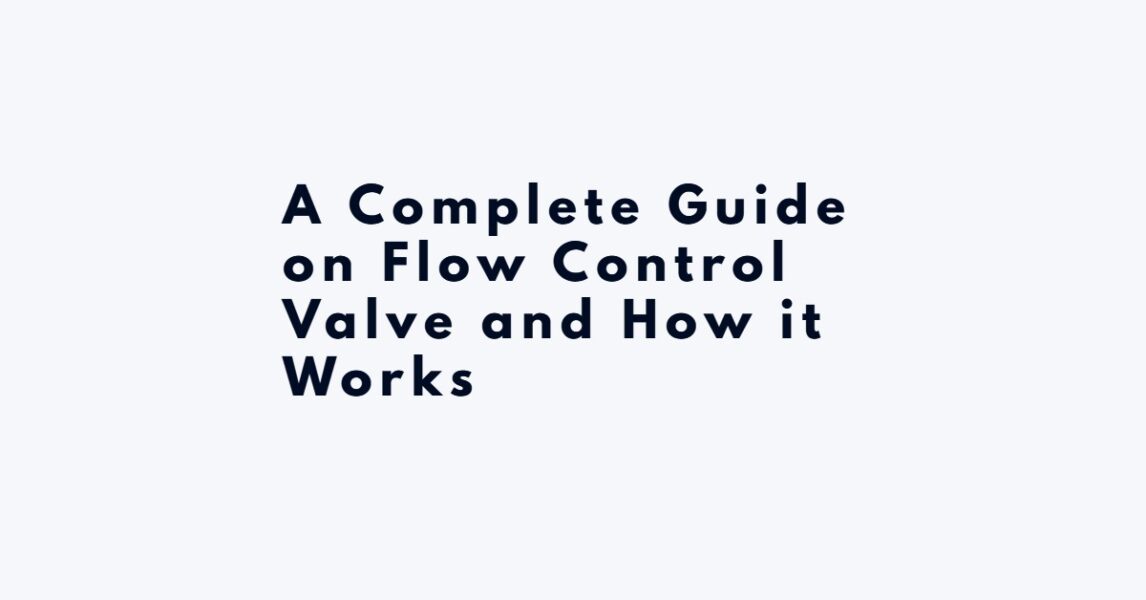Flow control valves are used in many liquid and gas flow systems. They are used for both domestic and commercial purposes to control the flow of liquids and gases. There are various types of valves that are either manually operated or automatic. Manual valves do not control valves because they cannot monitor and control flow automatically. This post will focus on control valves to help understand how they work in various applications. Continue reading for more insights.
What is a Flow Control Valve?
Just like valves used in tap sinks and showers at home, industrial control valves use the same working principles when controlling flow. Flow control valves used in industries are built to monitor and control flow automatically and more precisely. They are also designed to handle high pressure and huge volume flow rate.
Parts of a Flow Control Valve
There are two basic parts found in a sink tap valve: an actuator, which is designed to move to control the body, and the body, which stops or allows the flow of water. The tapped valve has a rotary actuator that, when turned clockwise, allows more flow and anticlockwise to stop flow gradually.
On the other hand, industrial flow control valves have three distinctive parts, which include the body, actuator, and positioner. Commands from the control system are received by these three components, which triggers the actuator to react accordingly. Other smaller parts found in a control valve include the seat rings, gaskets, valve plugs, and bonnets.
Types of Control Valve Bodies
The flow control valve market is flooded with many types of control valve bodies. A particular body type may offer more features than the other, based on the application. The measured media is always in contact with the valve body. The material used to design the flow control valves will determine the pressure, temperature, and properties of the fluid.
Control valve body types simply mean types of control valves, which are categorized into two groups: rotating and linear valve types. To reduce or increase fluid flow, an element in a rotating valve type is turned within the stream. A straight-line motion of a sliding stem is used to regulate flow by either reducing or increasing it in a linear control valve body.
Rotating Valve Type Bodies
What makes rotating valves more popular is their lightweight and low cost. They are available in several types, including:
- Butterfly Control Valves
This type of control valve is ring-shaped, with a disc in the middle that works as a plug. Other concepts are available depending on the vendor, but topically, most designs will have the wall of the valve as its own body. Most manufacturers will recommend an operating range of between 0 to 60 degrees. The force used to close and open the valve is considered when using this type of control valve.
- Ball Control Valves
Besides being popularly used in on/off controls for a long time, ball control valves are now finding their way into graduated control valve types as well. These valve-type designs consist of a ball and a plug, which allows partial or full flow through the valve. Compared to other models, a ball valve type has a double seat with reliable leakage specs. Since the force is not balanced and the fluid will try to close, making it a non-balanced valve. However, it also works in both flow directions. The valve is augmented with varying kinds of plugs. One of the plugs will let fluid pass through the valve at an opening of 90°, while the other one limits 40% of fluid flow. There are also different types of seats used for control valve manipulation.
Linear Control Valve Bodies
A flow control valve with a linear body consists of an element that moves linearly when closing or opening flow. Here are a few examples of linear control valves:
- Globe Control Valves
These types of control valves are commonly used in various applications and come in two designs, including the single-seat and the double seat.
Globe Single Seat Control Valve – In such globe control valves, there is only one orifice where the fluid passes through. The condition of the valve is adjusted based on the plug. In a neutral position, the valve is closed or opened. In its neutral position, it is important to note that the media has to flow against the valve.
Globe Double Seat Control Valve – In this type of globe valve, two orifices are available where fluid flows through at a time. As closed or open, this valve also has a neutral position. Since the plug needs to open and close at the two orifices at the same time, it will have a different design.
- Diaphragm Control Valve
Although the diaphragm control valve is cost-effective based on the application, it has a few drawbacks. It’s design is quite different from the globe valve. Diaphragm control valves are often used with high viscosity fluids, corrosive fluids, and fluids with solids. Once installed, it works as an excellent leakage seal.
Conclusion
Without proper flow control, monitoring, and measurement, it is hard to achieve the plant’s bottom line. Although there are many fluid and gas flow management devices, a flow control valve is the most effective instrument for monitoring and controlling fluid flow. To increase their credibility and reliability, you have to pair each one of them with the right application. Ask the control valve manufacturer for guidance if you are not sure about its application.






